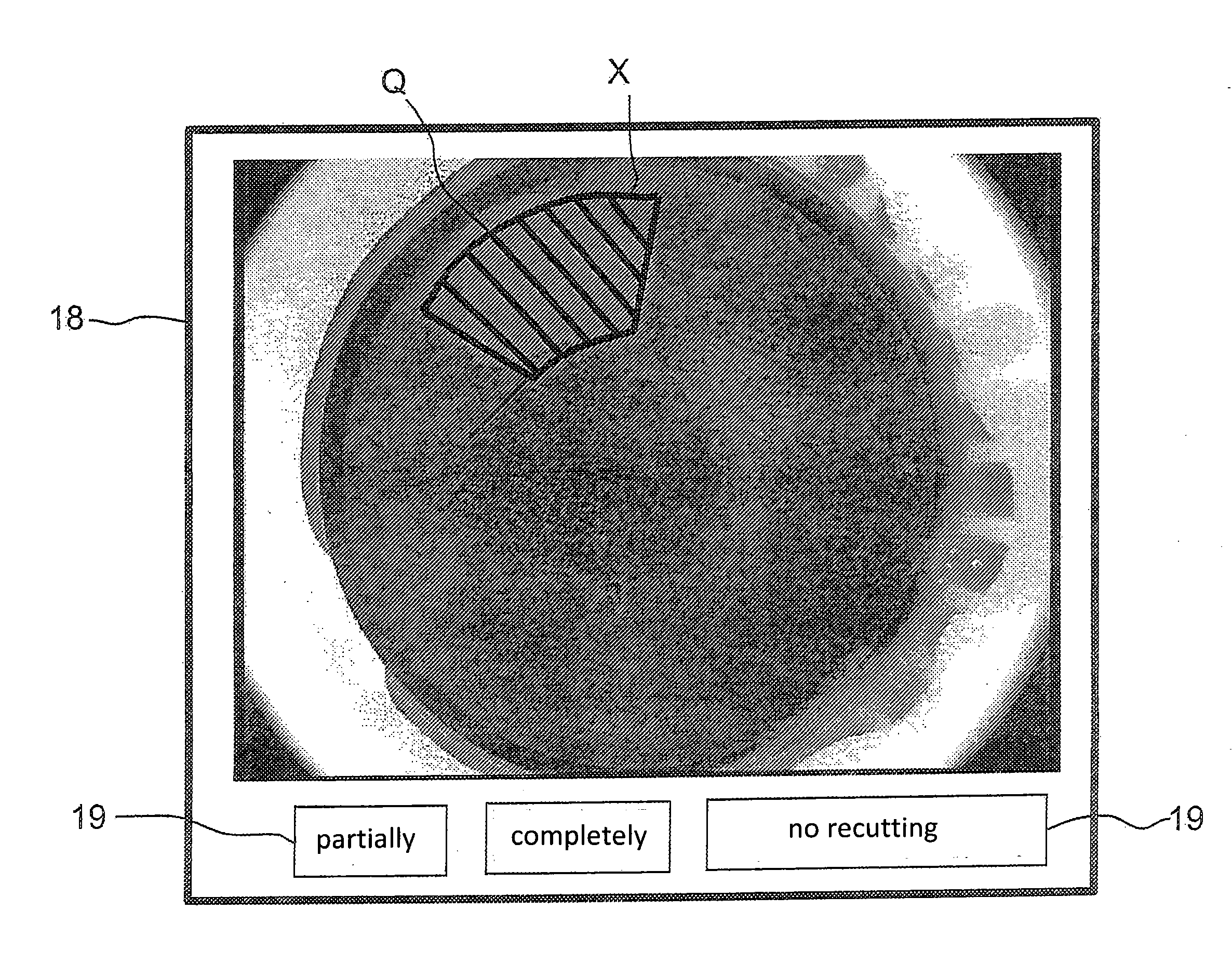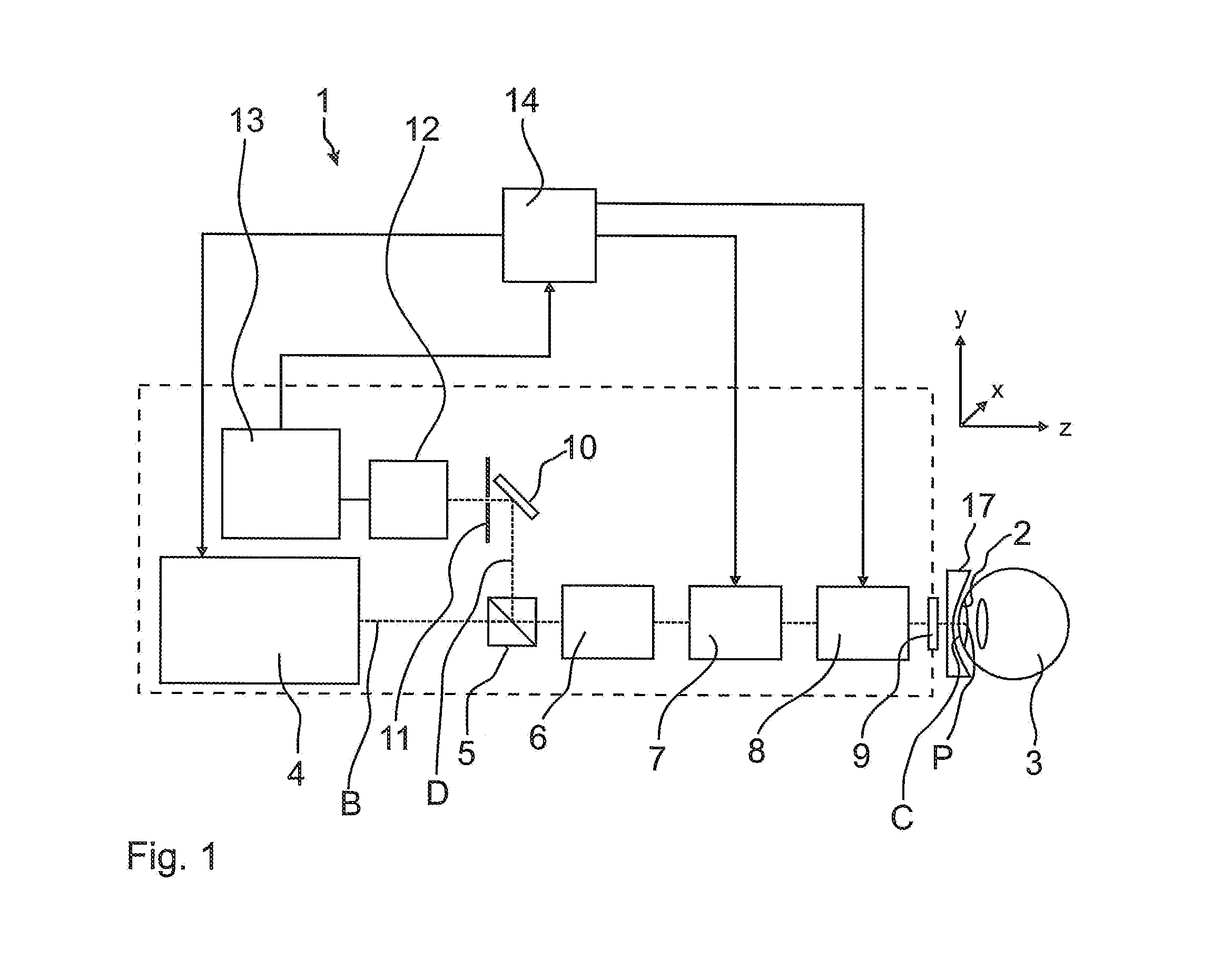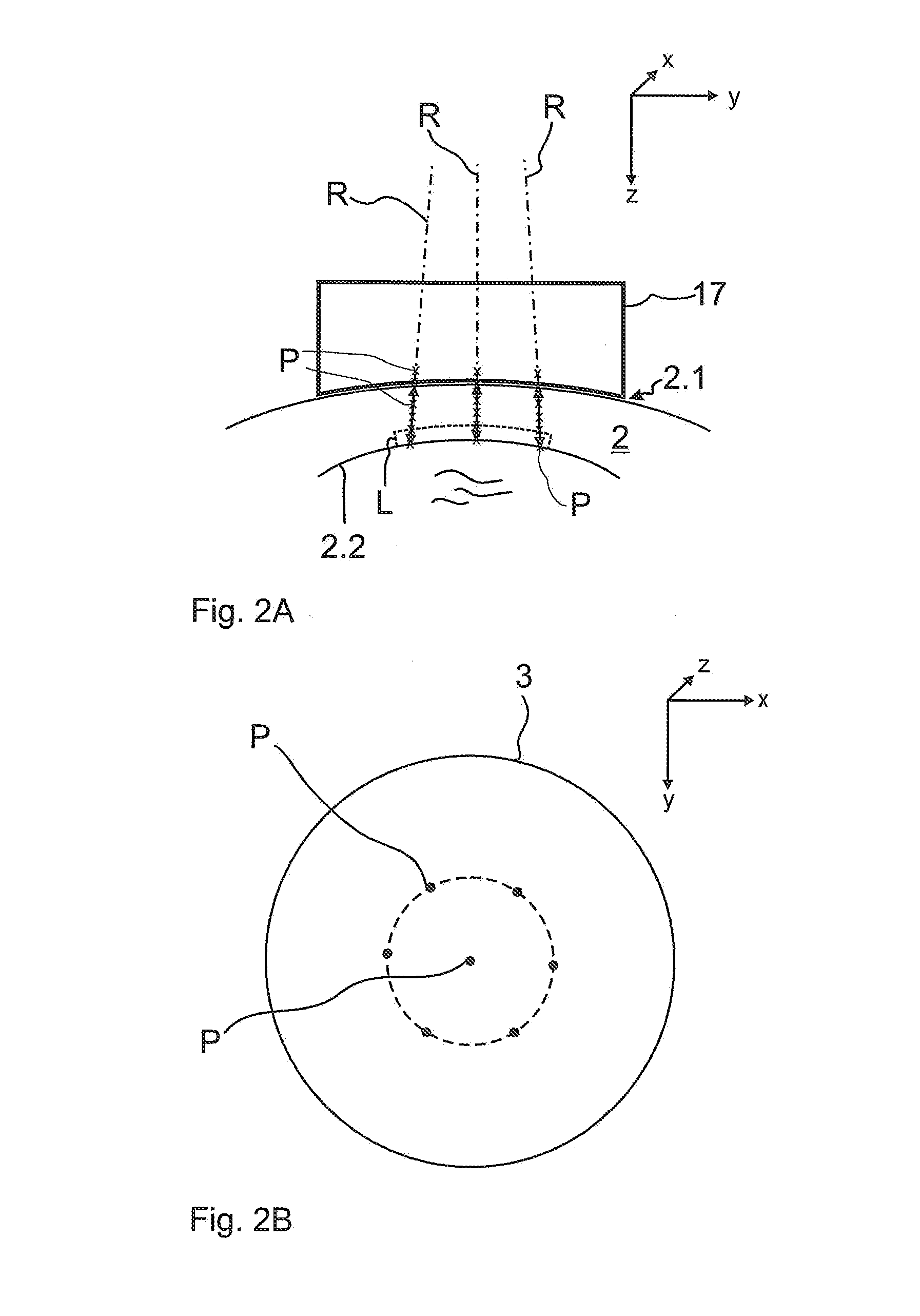Ophthalmological laser system and operating method
- Summary
- Abstract
- Description
- Claims
- Application Information
AI Technical Summary
Benefits of technology
Problems solved by technology
Method used
Image
Examples
Embodiment Construction
[0066]FIG. 1 shows an exemplary ophthalmological laser system 1 for identification and localization of the posterior boundary layer of a cornea 2 of an eye 3 with regard to form and position of the boundary layer. The laser system 1 comprises a laser 4, a polarization beam splitter 5, scan optics 6, a scanner unit 7, focusing optics 8, and an optical phase retardation system 9, which together form an illumination beam path B; as well as a deflection mirror 10, a confocal aperture diaphragm 11, and a detector 12, which form a decoupled detection beam path D. In addition, the laser system 1 comprises an amplifier 13 and a control unit 14. Between the laser system 1 and the eye 3, an immobilization device 17 with a contact glass for the eye 3 is positioned, behind which lies the examination region. On the side facing the eye 3, the contact glass can exhibit a spherical, planar, eye-curved, or any other surface rotationally symmetric around the optical axis. This example shows a spheric...
PUM
 Login to View More
Login to View More Abstract
Description
Claims
Application Information
 Login to View More
Login to View More - R&D
- Intellectual Property
- Life Sciences
- Materials
- Tech Scout
- Unparalleled Data Quality
- Higher Quality Content
- 60% Fewer Hallucinations
Browse by: Latest US Patents, China's latest patents, Technical Efficacy Thesaurus, Application Domain, Technology Topic, Popular Technical Reports.
© 2025 PatSnap. All rights reserved.Legal|Privacy policy|Modern Slavery Act Transparency Statement|Sitemap|About US| Contact US: help@patsnap.com



